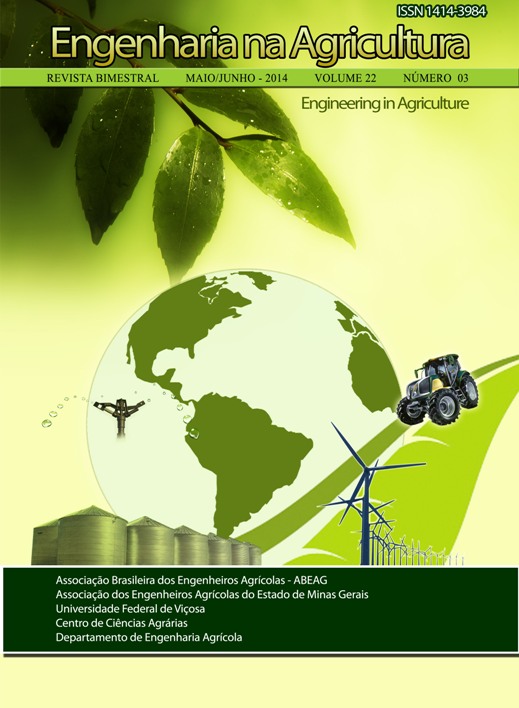IRRIGATION DEPTHS AND NITROGEN RATES IN COVERAGE IN THE DRY BEAN - DOI: 10.13083/1414-3984.v22n04a07
DOI:
https://doi.org/10.13083/reveng.v22i4.492Keywords:
Phaseolus vulgaris, preparo convencional, tanque Classe A, ureia.Abstract
The irrigation of the dry bean during the winter season has resulted in productivity above the annual average, mainly due to increases in technology and nitrogen fertilizers. The objective of this study was to evaluate the response of the dry bean to different irrigation depths and nitrogen fertilization in Aquidauana, MS, Brazil. The experiment was conducted at the Unidade Universitária de Aquidauana- Universidade Estadual do Mato Grosso Sul, using the dry bean cultivar “Pérola” sown in July 2005. A randomized block experimental design was used with split plots consisting of three blocks and two replications in each block. The plots consisted of three irrigation depths (16.5, 27.6 and 30.5 mm) corresponding to 50, 30 and 27% of the field capacity, respectively, and four nitrogen fertilizer levels (0, 50, 100 and 150 kg ha-1). We evaluated the number of pods per plant, grain number per plant, grain number per pod, weight of 100 grains, grain yield per plant and grain yield, and agronomic efficiency. It was concluded that irrigation depths based on field capacity do not influence the production components and grain yield of the dry bean. The number and yield of grains per plant and the weight of 100 grains are influenced by the coverage nitrogen rates in dry bean.Downloads
Downloads
Published
How to Cite
Issue
Section
License
Authors who publish with this journal agree to the following terms:
The author(s) authorize(s) the publication of the text in the journal;
The author(s) ensure(s) that the contribution is original and unpublished and that it is not in the process of evaluation by another journal;
The journal is not responsible for the views, ideas and concepts presented in articles, and these are the sole responsibility of the author(s);
The publishers reserve the right to make textual adjustments and adapt texts to meet with publication standards.
From submission, the author is fully conceding the paper's patrimonial rights to the publication, but retaining the owner of its moral rights (authorship and paper's identification) according to Creative Commons Attribution-Noncommercial.








 Licensed by
Licensed by 